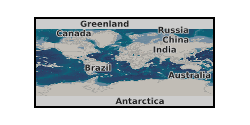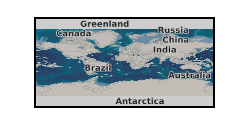Dicom
Type of resources
Topics
Keywords
Contact for the resource
Provided by
Years
Formats
Update frequencies
-

The images in this dataset show the mixing of two liquid solutions in a random bead pack as a function of time and in three-dimensions. The working fluids used in this study are solutions of methanol and ethylene-glycol (MEG, fluid 1) and brine (fluid 2). In particular, three mixtures of ethylene-glycol and methanol were prepared that differ in wt% ethylene-glycol, namely 55 wt% (MEG55), 57 wt% (MEG57) and 59 wt% (MEG59). Measurements are conducted using in the regime of Rayleigh numbers, Ra = 2000-5000. X-ray Computed Tomography is applied to image the spatial and temporal evolution of the solute plume non -invasively. The tomograms are used to compute macroscopic quantities including the rate of dissolution and horizontally averaged concentration profiles, and enable the visualisation of the ow patterns that arise upon mixing at a spatial resolution of about (2x2x2) mm3. We observe that the mixing process evolves systematically through three stages, starting from pure diffusion, followed by convection-dominated and shutdown. A modified diffusion equation is applied to model the convective process with an onset time of convection that compares favourably with literature data and an effective diffusion coefficient that is almost two orders of magnitude larger than the molecular diffusivity of the solute. The comparison of the experimental observations of convective mixing against their numerical counterparts of the purely diffusive scenario enables the estimation of a non-dimensional convective mass flux in terms of the Sherwood number, Sh = 0.025Ra. We observe that the latter scales linearly with Ra, in agreement with observations from both experimental and numerical studies on thermal convection over the same Ra regime.
-

Carbon dioxide (CO2) injection into deep saline aquifers is governed by a number of physico-chemical processes including mineral dissolution and precipitation, multiphase fluid flow, and capillary trapping. These processes can be coupled, however, the impact of fluid-rock reaction on the multiphase flow properties is difficult to study and is not simply correlated to variation in rock porosity. We observed the impact of rock mineral dissolution on multiphase flow properties in two carbonate rocks with distinct pore structures. The Ketton carbonate was an ooidal limestone with a distinct bimodal pore structure whereas the Estaillades limestone was a bioclastic limestone with a wide range of pore sizes. Observations of steady state N2-water relative permeability and residual trapping were obtained at 100 bars fluid pressure and 22°C, with X-ray tomography used to estimate fluid saturation. These tests alternated with steps in which mineral was uniformly dissolved into solution from the rock cores using an aqueous solution with a temperature controlled acid. Eight alternating sequences of dissolution and flow measurement were performed, with on average 0.5% of the mass of the rocks dissolved at each stage. A sequence of mercury injection capillary pressure measurements were conducted on a parallel set of samples undergoing the same treatment to characterize the evolving pore size distribution and corresponding capillary pressure characteristics. Variations in the multiphase flow properties were observed to correspond to the changes in the underlying pore structure. In the Ketton carbonate, dissolution resulted in an increase of the fraction of pore volume made up by the smallest pores and a corresponding increase in the fraction made up by the largest pores. This resulted in a systematic increase in the relative permeability to the nonwetting phase and decrease in relative permeability of the wetting phase. There was also a modest but systematic decrease in residual trapping. In the Estaillades carbonate, dissolution resulted in an increase in the fraction of pore volume made up by pores in the central range of the initial pore size distribution, and a corresponding decrease in the fraction made up by both the smallest and largest pores. This resulted in a decrease in the relative permeability to both the wetting and nonwetting fluid phases and no discernible impact on the residual trapping. In summary, the impact of rock matrix dissolution will be strongly dependent on the impact of that dissolution on the underlying pore structure of the rock. However, if the variation in pore structure can be observed or estimated with modelling, then it should be possible to estimate the impacts on multiphase flow properties.
 BGS Data Catalogue
BGS Data Catalogue